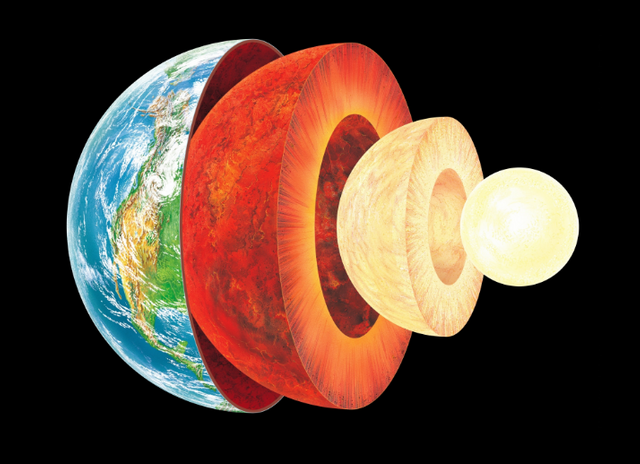5 Facts About the Earth's Inner Core

It's Almost The Size of the Moon.
The Earth's inner core is surprisingly large, measuring 2,440 km (1,516 miles) across. It makes up 19 percent of the Earth's total volume, which makes it just 30 percent smaller than the moon.
It's Hot...Really Hot
The temperature of the inner core is estimated to be between 3,000 and 5,000 Kelvins (4,940 to 8,540 degrees Fahrenheit). The high temperature comes from three main sources. There is residual heat left from the Earth's formation, and heat is generated by gravitational forces from the sun and moon as they tug and pull on the inner core. Finally, the radioactive decay of elements deep within the Earth also produces heat.
It's Mostly Made of Iron
Scientists believe that the Earth's inner core is a solid and is mainly composed of iron. The scorching hot iron inner core is able to remain solid because of the extremely high pressures at the center of the Earth. Other elements found in the core include nickel, a metal similar to iron, and silicon, an abundant substance used in glass and computer chips. You'll also find radioactive elements such as uranium and potassium, which give off energy that heats the core.
It Spins Faster Than the Surface of the Earth
Experiments reported in July 1997 suggest that the inner core spins at a slightly faster speed than the Earth itself. The research conducted at Columbia University suggests that the inner core rotates in the same direction as the rest of the planet. However, the research shows that it makes one complete revolution two-thirds of a second faster than the rest of the planet.
It Creates a Magnetic Field
Because the Earth's inner core is a solid lump of iron, you may think that it is the source of the Earth's magnetic field. But this is not the case. The Earth's outer core, which consists of molten iron and nickel, flows around the inner core, and this motion produces the magnetic field.